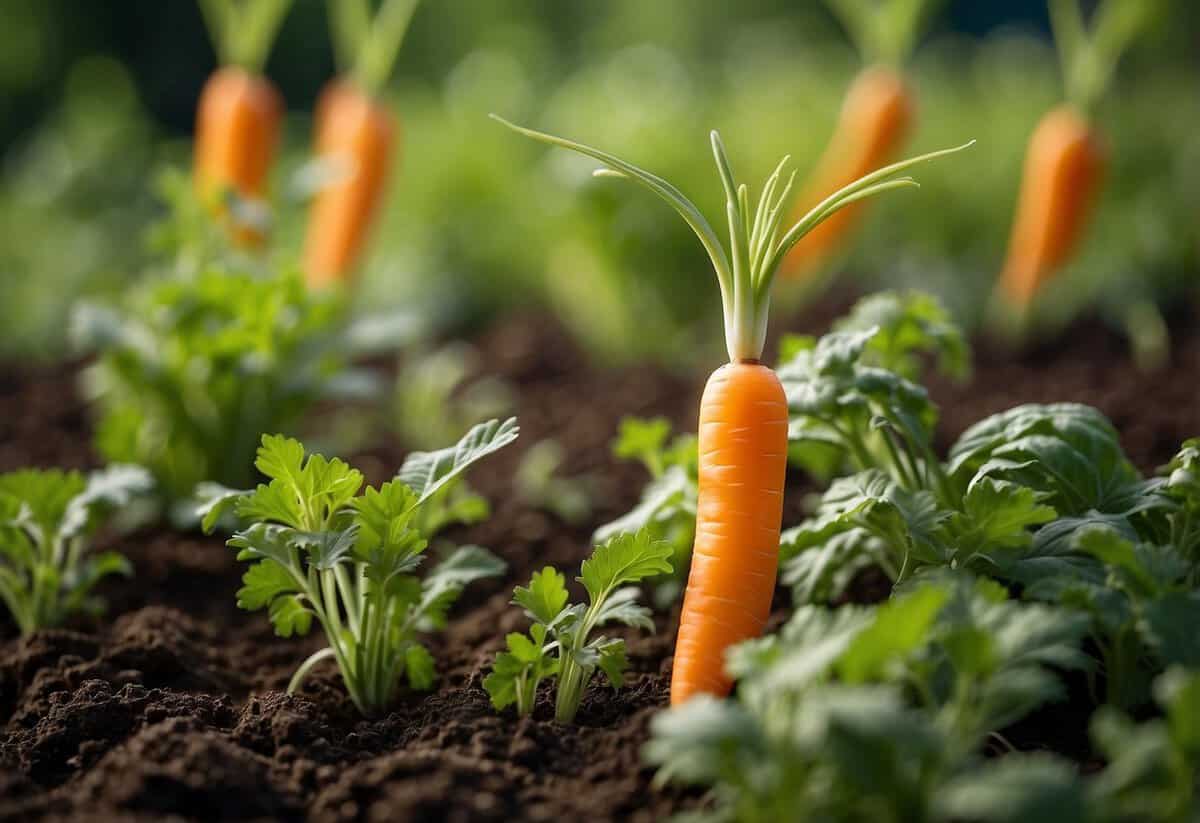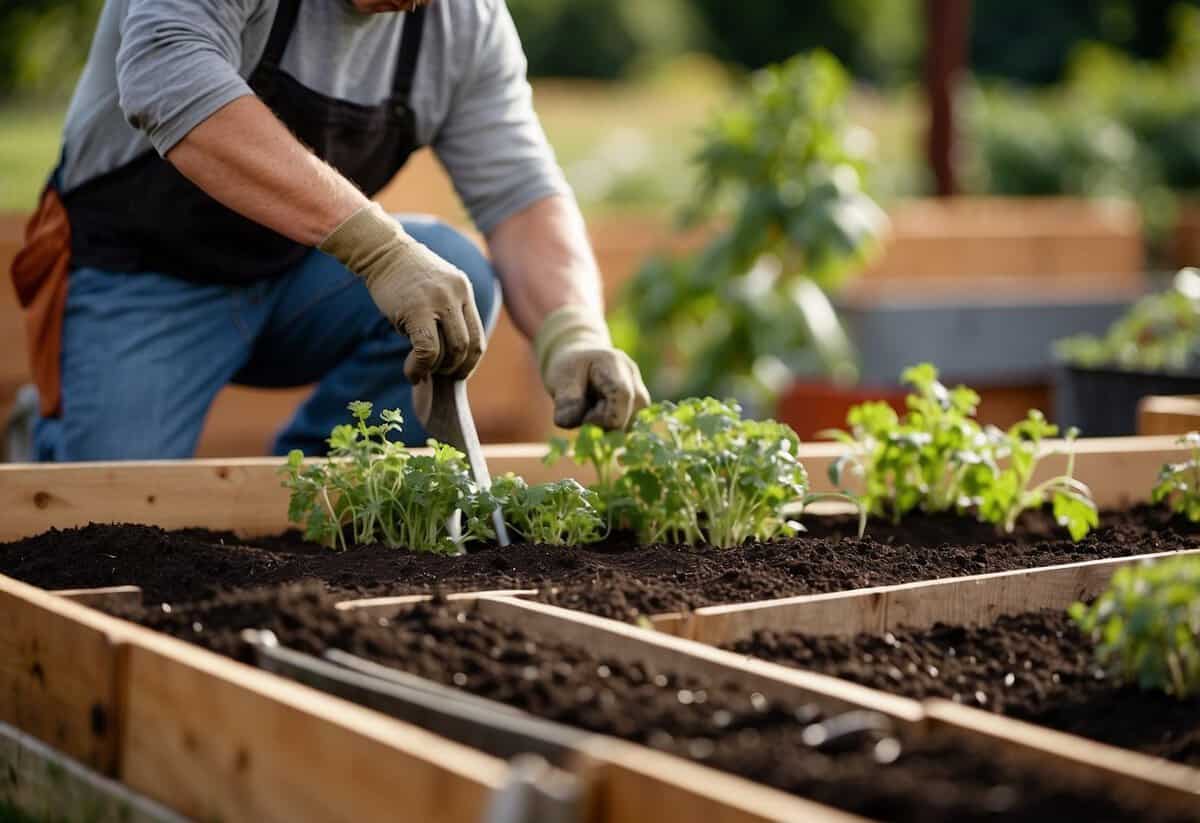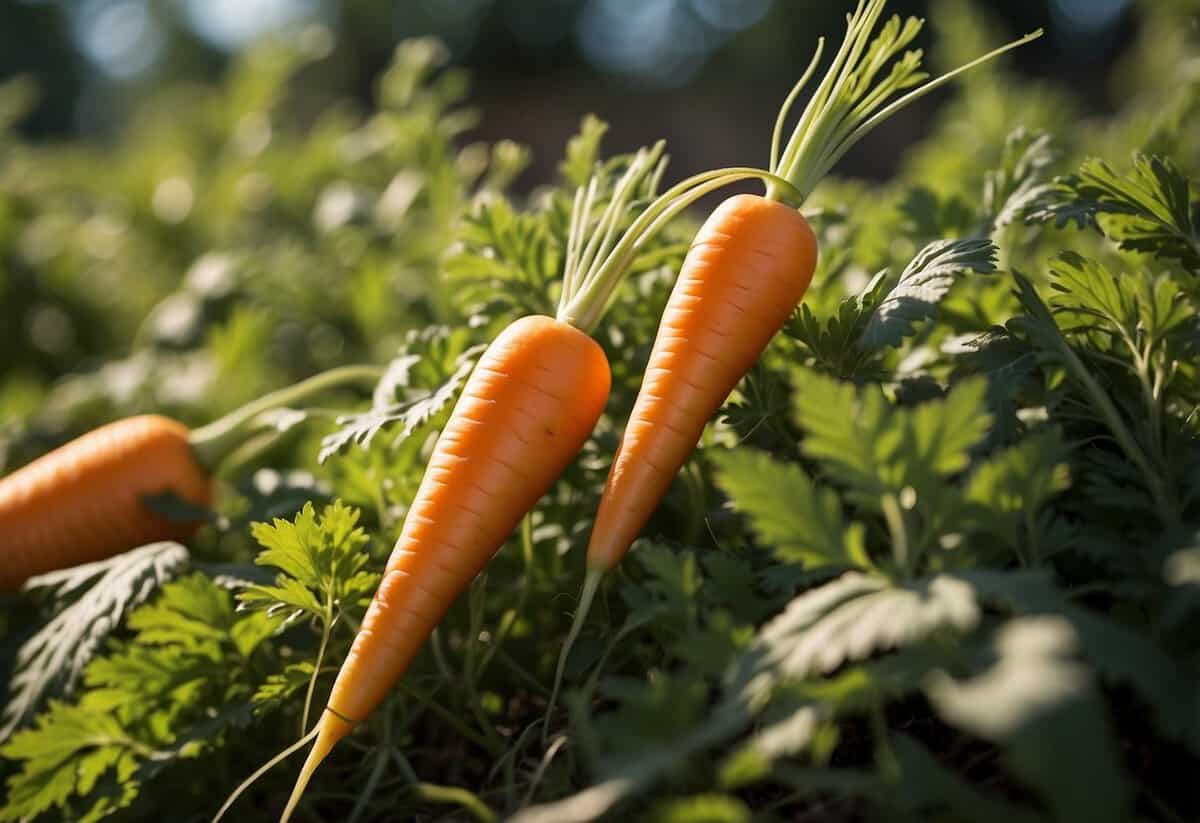Carrot Garden Tips: Easy Tricks for a Bountiful Harvest
Growing carrots in your garden can be both fun and rewarding. With the right tips and a bit of patience, you can enjoy fresh, crunchy carrots straight from your backyard. Imagine the satisfaction of pulling out a vibrant, healthy carrot that you’ve nurtured from a tiny seed.

What are the best ways to ensure your carrots grow perfectly each time? This article will guide you through some essential tips that cater to both beginners and seasoned gardeners. Whether you have a spacious garden or a small balcony, you’ll find useful advice to help you achieve a bountiful carrot harvest.
1) Test Your Soil

It’s important to test your soil before planting carrots. You need to know if your soil has the right balance of sand, silt, and clay for carrots to thrive.
To start, dig down about four inches and take a sample. Do this in different spots in your garden. Mix the samples together in a bucket.
Remove any rocks or roots from the mix. Crush any clumps with your fingers. This will help you get a better idea of your soil type.
For more detailed steps, Garden Soil Testing can be useful. This can help ensure your soil is ready for healthy carrot growth.
2) Choose the Right Variety

Picking the right carrot variety makes a big difference in your garden. Some carrots thrive in certain conditions while others do not.
For small spaces, look for compact varieties like stump-rooted carrots. They are perfect for urban gardens or container gardening.
To get a large harvest, go for long varieties like Imperator. They produce more carrots overall and are ideal if you have deep, loose soil.
3) Prepare Raised Beds

Start by loosening the soil and adding compost or worm castings. This improves soil texture and nutrient content.
Pre-water your raised bed before planting. It helps ensure the seeds will settle into a moist environment.
Plant your carrot seeds about 1/4 inch deep. Cover lightly with high-quality compost to keep moisture in the soil. Keep the bed moist to promote germination.
Running a line of drip tape along each carrot row ensures the water goes exactly where it’s needed.
4) Proper Watering Techniques

Watering carrots properly is key to their healthy growth. Aim to water them deeply so the moisture reaches 6-8 inches into the soil. This encourages strong root development.
Morning watering is best. It allows leaves to dry quickly, reducing the chance of diseases.
Be careful not to overwater. Too much water can lead to rot and poor root growth.
Adding mulch around your carrot plants helps retain soil moisture. Mulch also keeps weeds in check.
Make sure to space your carrot plants properly. This ensures they absorb water efficiently.
These simple steps can help you grow healthy, thriving carrots.
5) Mulch Your Carrot Patch

Mulching helps with moisture retention and weed control. Apply a 2-3 inch layer of mulch like sawdust, pine needles, straw, leaf mold, or compost.
Avoid letting the mulch touch the carrot stems to prevent rot. Spread it evenly across the garden. A space of 2-3 inches around each carrot stem is ideal. This setup keeps your carrots healthy and happy.
For more ideas, check out this guide on using organic mulches in your garden.
6) Regularly Weed the Garden

Weeding is important for healthy carrot growth. Weeds compete for nutrients, water, and sunlight, making it harder for your carrots to thrive.
Check your garden often and remove any weeds you see. Be gentle to avoid disturbing the carrot roots.
Using a hoe or a hand weeder can help make the job easier and more effective.
7) Protect Against Pests

Garden pests can be a big problem for your carrots.
To keep carrot flies away, try using insect netting or fleece to cover your plants. This helps stop adult flies from laying their eggs.
Another tip is to use DIY traps. Place a cut carrot in a jar with a paper cup. Bury it near your crop to capture pests. Check daily and remove any trapped bugs with soapy water.
8) Thin Your Seedlings

When your carrot seedlings are about 2 inches tall, it’s time to thin them out. This helps each carrot get enough space and nutrients to grow well.
You should aim for about 1 to 2 inches between plants after the first thinning. Later, thin again to space them 3 to 4 inches apart.
Use gentle tools like a hand fork or garden knife to avoid damaging the plants you keep. This care helps ensure a healthy, vibrant carrot crop. For more details, check out this guide to thinning carrot seedlings.
9) Use Row Covers

Row covers can protect your carrots from pests like aphids and carrot rust flies. They create a shield that keeps insects away from your plants.
Using row covers also helps control weeds by blocking sunlight that weed seeds need to grow. This means fewer weeds competing with your carrots for nutrients and water.
Row covers can also keep the soil warm, which helps your carrots grow faster. They allow sunlight and rain to reach your plants, making them a helpful addition to your garden.
You can read more about the benefits of using row covers in the garden.
10) Plan for Succession Planting

Succession planting keeps your carrot garden producing all season.
Start by planting a new row of carrots every 2-3 weeks. This way, you’ll always have fresh carrots to harvest.
Use a row cover to protect new seedlings and keep the soil moist.
Staggered planting helps manage your harvest and keeps your garden thriving.
By planning ahead, you ensure a continuous supply of fresh carrots.
Soil Preparation

Preparing your soil correctly can make a huge difference in how well your carrots grow. Focus on creating a loose, well-drained environment and maintaining the right pH levels to support healthy root development.
Choosing the Right Soil
Carrots thrive in loose and well-draining soil, such as sandy loam. This type of soil allows carrot roots to grow straight and deep. Avoid heavy clay or rocky soils, as these can cause the roots to become misshapen.
To improve your soil structure, remove any rocks, debris, or clumps. This minimizes obstacles that may hinder root growth. Aim to loosen the soil to a depth of at least 10-12 inches, ensuring your carrots have plenty of room to grow.
A deep seed bed is crucial for straight and uniform carrot roots. This means taking extra care in the initial stages to ensure the soil is well-prepared.
Soil Amendments
Adding organic matter to the soil can greatly improve its texture and fertility. Compost is an excellent amendment, enhancing the soil’s ability to hold moisture and nutrients.
Manure can also be beneficial but use it sparingly and well-composted to avoid nitrogen burn, which can harm root crops. Aim for a balanced mix with compost to create a nutrient-rich environment.
Avoid over-tilling as it can lead to compaction, making it harder for carrots to penetrate the soil. Instead, gently mix in organic materials to maintain a friable texture.
Regularly adding amendments keeps the soil fertile, allowing successive crops to thrive without depleting essential nutrients.
Proper pH Levels
Carrots prefer a slightly acidic to neutral pH, specifically between 6.0 and 6.8. You can test your soil pH using a simple home test kit or by sending samples to a local extension service.
If your soil is too acidic, adding lime can help raise the pH. Conversely, if it is too alkaline, sulfur or peat moss can lower the pH. Maintaining the correct pH level ensures that carrots can access the nutrients they need to grow well.
Frequent monitoring helps you make timely adjustments, providing an optimal growing environment for your carrots.
Planting Carrots

When planting carrots, focus on sowing seeds properly and ensuring correct spacing and depth. These steps will help you grow healthy and vibrant carrots.
Sowing Seeds
Begin by preparing the soil. Till it at least a foot deep to make sure it is light, loose, and well-drained. Carrot seeds are small and light, so it’s best to moisten the soil before planting. Sow the seeds in rows by creating shallow furrows about 1/4 inch deep.
You can use the long handle of a garden tool to make the furrows. For better germination, soak the seeds in warm water for a few hours before planting. Cover the seeds with a thin layer of light, loose soil to prevent them from floating or blowing away. Keep the soil consistently moist using a fine mist spray.
Spacing and Depth
Proper spacing is crucial for carrot growth. Space your carrot rows 12 to 18 inches apart. Within each row, sow the seeds about 1 inch apart. Once the seedlings are a few inches tall, thin them to about 4 inches apart.
This spacing allows the carrot roots to develop without overcrowding. If your garden has heavy clay soil, consider growing carrots in containers or raised beds at least 8-12 inches high. This ensures that the roots have enough space and depth to grow properly. Proper spacing will prevent overcrowding and ensure healthier carrots.
Carrot Care Tips

Taking good care of your carrot crop ensures they grow healthy and strong. Focus on proper watering techniques, effective weeding, and managing pests to achieve the best harvest.
Watering Techniques
When it comes to watering carrots, consistency and method are key. Use a fine mist spray to water the seedlings gently, avoiding strong streams that could displace seeds.
Once established, aim to water the carrots with about an inch of water per week. It’s best to water deeply and less frequently to encourage roots to grow deep. Use overhead irrigation or drip irrigation for mature plants to ensure even moisture distribution without washing away the soil.
Weeding
Weeding your carrot garden is essential for healthy plant growth. Young carrots can easily be overrun by weeds competing for nutrients and sunlight. Hand-pull weeds carefully, especially when the plants are young, to avoid disturbing the delicate roots.
Mulching can be an effective way to keep weeds at bay. A layer of straw or grass clippings around your carrot plants will prevent weed growth and help retain soil moisture. Remember to regularly check and remove any emerging weeds to maintain a clean garden bed.
Pest Control
Pests can be a significant problem for carrot crops. Common pests include carrot rust flies, aphids, and nematodes. To keep these pests at bay, consider using row covers to protect your plants from insects.
Regularly inspect your plants for any signs of pest activity, like holes in the leaves or unusual discoloration. Introduce beneficial insects like ladybugs to your garden as they naturally prey on many common carrot pests.
Another effective method is crop rotation. Avoid planting carrots in the same spot each year to prevent soil-borne pests from thriving. Keeping your garden clean and removing dead plants and debris will also help reduce pest problems.







